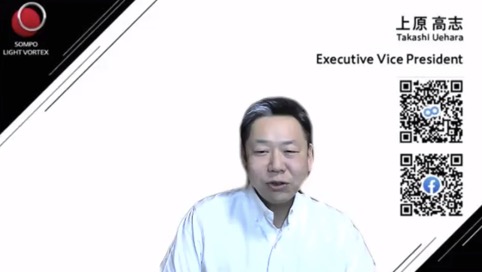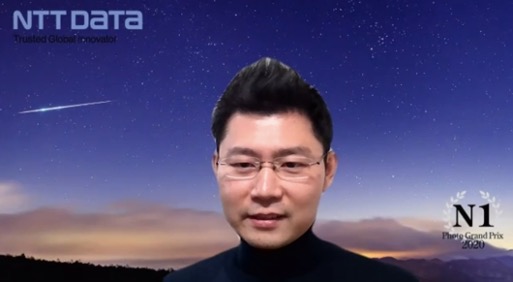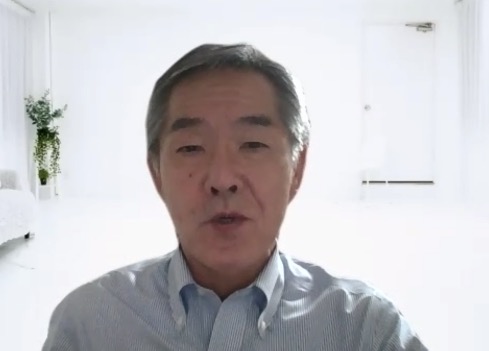X-HUB TOKYO, which supports the overseas expansion of startups in Tokyo, held its 5th overseas expansion seminar “Learning by example: Japanese Companies and Global Open Innovation – Creating Business with Impact” on January 21.
The main feature of the event is lectures about examples of global open innovation in Japanese companies given by three speakers; Mr. Takashi Uehara, Executive Vice President of SOMPO Light Vortex, Inc, Mr. Izuru Watanabe, Director of Digital Strategy, Global Strategy Office, Corporate Headquarters, NTT Data Corporation, and Mr. Mitsuhiro Doi, Director of Nissan Motor Co. Mr. Izuru Watanabe, General Manager of Digital Strategy, Global Strategy Office, Corporate Headquarters, NTT Data Corporation, and Mr. Mitsuhiro Doi, Director of Nissan Research Institute.
The audicence learned how to make collaboration with domestic and international startups successful, and what they should keep in mind for success of open innovation.
What are the necessary attitudes for promoting open innovation?
 Executive Vice President SOMPO Light Vortex, Inc.
Executive Vice President SOMPO Light Vortex, Inc.
Takashi Uehara
- First of all, we would like to ask Mr. Takashi Uehara, Executive Vice President of SOMPO Light Vortex, Inc, about business of your company and examples of open innovation.
-
SOMPO Light Vortex was established in July 2021 as a subsidiary of the digital domain of SOMPO Holdings. It seamlessly provides products and servicies from planning, development to sales, utilizing digital technology, and we are also working with domestic and international startups to launch new businesses.
SOMPO Holdings has SOMPO Digital Labs in Silicon Valley, US and Tel Aviv, Israel other than Japan. Our “Sprint Team,” which is incharge of agile development, consists of about 50 people from different backgrounds, and SOMPO Holdings has conducted more than 300 PoC (Proof of Concept) and open innovation so far.
For example, SOMPO Care, nursing care & seniors business company, which is one of our group companies have started to develop self-driving wheelchairs and sensor system in a bathroom for watching over people. In the P&C insurance industry, we also verifies a service that AI (artificial intelligence) proposes insurance products based on the past data and responds to inquiries from agencies and empoyee staffs. In addition, we have been developing a business of taking from policy holders of automobile insurance and selling accidental cars through API (Application Programming Interface) linkage with multiple auction sites.
- Looking back on the past examples of open innovation, would you give us any advice to create new businesses in the future?
-
Especially in large companies, there may be times when you feel a strong atmosphere of “no room for failure” when developing new businesses or promoting open innovation. Looking back on the past cases, we have had many failed projects that the development of services and products did not go well due to a lack of data and experience. However, from those failures, we learned the necessity of identifying the market carefully and writing a clear business model.
Failure is inevitable for change such as business creation and open innovation. It is not an exaggeration to say that you will not get restults in a short period of time when creating an social impact. The important thing is not to be too afraid of failure. The earlier you fail, the sooner you can recover. If you keep the general policy and culture that should be at the core of the project, change the methods to achieve the goal flexibly, and overcome the fear of failure, you will gradually start to see results.
Tips for collaborating with domestic and overseas startups
 NTT DATA Corporation, Digital Strategy, Global Strategy Office, Corporate Management Division General Manager
NTT DATA Corporation, Digital Strategy, Global Strategy Office, Corporate Management Division General Manager
Izuru Watanabe
- Next, I would like to ask Mr. Izuru Watanabe, General Manager of Digital Strategy, Global Strategy Office, Corporate Headquarters, NTT DATA Corporation, about his current projects.
-
As a digital strategy department under the direct control of the headquarters, the Global Strategy Office of the Corporate Management Division promotes open innovation at NTT DATA.
In 2013, we launched the Open Innovation Forum “From the Port of Toyosu” to create new businesses together with our customers and startups. While connecting more than 4,000 members from inside and outside of the company, we have cooperated with many supporters, partners, and accelerators from around the world. We also respond to a wide range of inquiries and consultations from those who have business issues.
To promote open innovation, we provide appropriate information and necessary supports after deepening our understanding of customer needs and social issues through related business units. we also invite startups as speakers refularly and have discussion with them about specific themes in order to grow the seeds of business.
 NTT DATA Corporation, Digital Strategy, Global Strategy Office
NTT DATA Corporation, Digital Strategy, Global Strategy Office
Yan Zexin
- Mr. Shin Facesawa, who is also involved in the promotion of open innovation in the Global Strategy Office, tells us what he considers when promoting collaboration with domestic and overseas startups.
-
When we collaborate with startups for open innovation and business creation, there are three main points that we keep in mind.
First, we must communicate the benefits of collaborating with NTT DATA clearly. By sharing the benefits in a logical, fact-based manner, the other party will be more convinced. When holding hearings and meetings for collaboration, it is important to remember that you are using the other party’s valuable time.
Secondly, in order to gain trust from your business partner, we should try to understand each other well. When we collaborated with Chinese startups in the past, we sometimes had discrepancies in our understanding of each other due to differences in language, culture, and business practices. Therefore, we assigned members who were familiar with the Chinese market, and we were finally able to steer the project toward a solution as a team even when problems arose during the PoC (Proof of Concept).
The third point is that each member of the team must believe in the success of the project and work on it with enthusiasm. If you share the possibility of success of a new business or project and the impact of success based on numbers and facts with your team members, they will be able to work on the projects with more enthusiasm.
It is often difficult to choose a partner from among many startups, including the time required for the selection process. However, if you can organize the purpose of the collaboration once again, you will be able to create successful open innovation.
What kind of open innovation is required in the automotive industry?
 Corporate Vice President, Alliance Global VP Nissan Research Center Nissan Motor Co., Ltd
Corporate Vice President, Alliance Global VP Nissan Research Center Nissan Motor Co., Ltd
Kazuhiro DOI
- Lastly, I would like to ask Mr. Mitsuhiro Doi, Director of Nissan Motor Co., Ltd. Research Institute, about the needs for open innovation in the automotive industry.
-
The environment surrounding automobiles has undergone major changes in the past few years. One example is the growing demand for public transportation and the emergence of vehicles equipped with new technologies such as AI (artificial intelligence). In an era where the traditional business model of “producing and selling cars” is changing, the automotive industry are required to rethink about what cars and mobility should be from multiple perspectives.
Open innovation is essential for the automotive industry to maintain its competitiveness in recent years when expansion of business domains and development of new technologies are accelerated. On the other hand, not all of the challenges will lead to the resrults when it comes to safety and quality. The more the technology advances , the more we need to pay attention to safety and quality, which are the basics of mobility. For example, when considering the application of the “all-individual battery,” which is expected to be the next-generation battery, to mobility, it is essential to consider safety.
- Please tell us about your approach to open innovation and the examples you have seen so far.
-
Nissan Motor’s Research Center has been promoting open innovation and R&D (Research and Development) to create new values that contribute to future mobility and society. Based not only in Japan, but also in innovation hubs such as Tel Aviv, Israel, Shanghai, China, and Silicon Valley in the US, we have focused on searching for open innovation partners and developing technologies. In the past, we have conducted demonstration tests in Kanagawa and Fukushima prefectures, and in Suzhou, China, we have started the development of automated driving in collaboration with a local startup.
Nissan’s technology has a huge potential of applications beyond cars. In the past, we have used our parts processing technology to create predetermined molds to manufacture sweets, and our low-cost thermal imaging sensor technology has led to the development of a temperature checker to take measures against the COVID-19.
In order to develop one’s own technology strategically and build one’s own business through collaboration with startups and companies, it is important to identify the strengths of the other party when considering a potential collaborator. If you can solidify the areas you want to be clear about in advance, you will be able to find the best partner for your company.
- In this event, lectures gave a presentation on the necessity and challenges of global open innovation with startups, as well as tips for collaborating with startups, based on actual cases, mainly from large companies. X-HUB TOKYO will continue to provide useful information for startups aiming to expand overseas as well as the latest trends in ecosystem and open innovation through various events.

